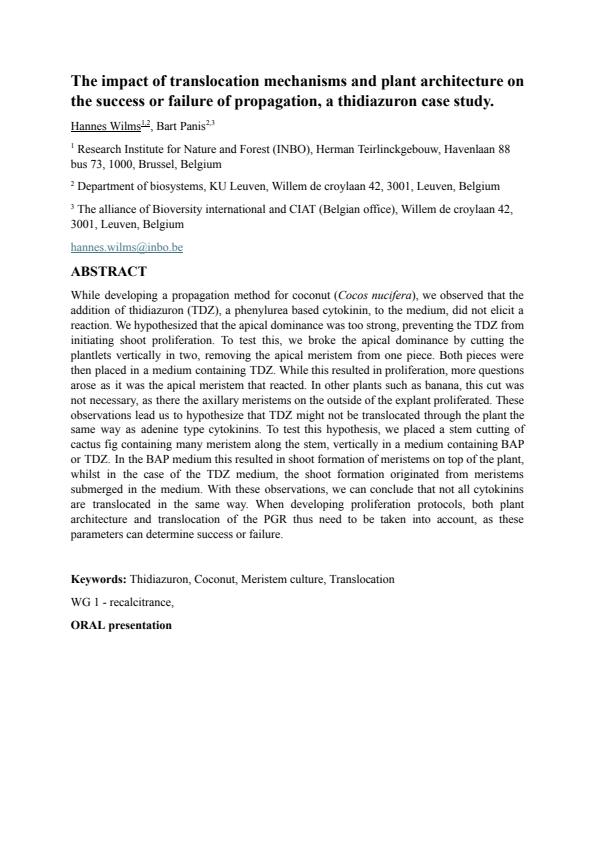The impact of translocation mechanisms and plant architecture on the success or failure of propagation, a thidiazuron case study.
Details
| Aantal pagina's | 1 |
|---|---|
| Pagina's (van-tot) | 17-17 |
| Type | Congres abstract in abstractproceedings |
| Categorie | Onderzoek |
| Taal | Engels |
Bibtex
@misc{acf9d92f-dbe6-4a3a-acb8-1f50917b332a,
title = "The impact of translocation mechanisms and plant architecture on the success or failure of propagation, a thidiazuron case study.",
abstract = "While developing a propagation method for coconut (Cocos nucifera), we observed that the addition of thidiazuron (TDZ), a phenylurea based cytokinin, to the medium, did not elicit a reaction. We hypothesized that the apical dominance was too strong, preventing the TDZ from initiating shoot proliferation. To test this, we broke the apical dominance by cutting the plantlets vertically in two, removing the apical meristem from one piece. Both pieces were then placed in a medium containing TDZ. While this resulted in proliferation, more questions arose as it was the apical meristem that reacted. In other plants such as banana, this cut was not necessary, as there the axillary meristems on the outside of the explant proliferated. These observations lead us to hypothesize that TDZ might not be translocated through the plant the same way as adenine type cytokinins. To test this hypothesis, we placed a stem cutting of cactus fig containing many meristem along the stem, vertically in a medium containing BAP or TDZ. In the BAP medium this resulted in shoot formation of meristems on top of the plant, whilst in the case of the TDZ medium, the shoot formation originated from meristems submerged in the medium. With these observations, we can conclude that not all cytokinins are translocated in the same way. When developing proliferation protocols, both plant architecture and translocation of the PGR thus need to be taken into account, as these parameters can determine success or failure.",
author = "Hannes Wilms and Bart Panis",
year = "2024",
month = apr,
day = "22",
doi = "",
language = "Nederlands",
publisher = "Instituut voor Natuur- en Bosonderzoek",
address = "België,
type = "Other"
}

